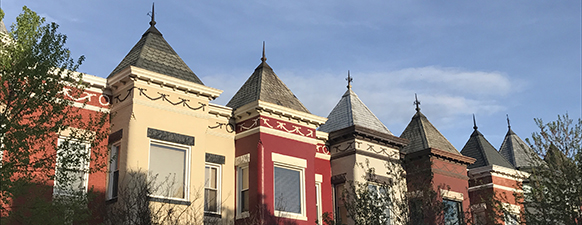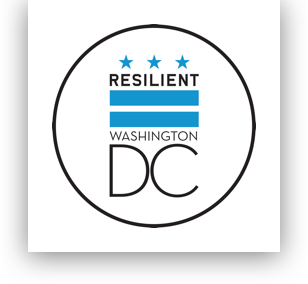
Through DC’s partnership with 100 Resilient Cities, the District receives support for the development of a Resilience Strategy that identifies resilience activities and priorities. The objective of the Resilience Strategy is to provide a roadmap for building resilience in the city. The strategy will trigger action, investment, and support within government and from outside groups.
The Resilience Strategy process builds off an Agenda-Setting Workshop that over 125 organizations attended in 2016. You can read a summary of the Agenda-Setting Workshop summary here.
The strategy development process is divided into two phases: Phase I establishes the foundation for the resilience strategy. Phase II encompasses the strategy build-out. DC is now at the end of Phase I, during which the District engaged in research, stakeholder engagement, and evaluation of existing actions and plans in order to identify the Discovery Areas identified below.
Resilient DC has identified several key questions about DC’s resilience, grouped around five Discovery Areas. These are areas where DC should better understand risk, evaluate interdependencies, and generate deeper understanding. The District also identified two cross-cutting themes that will permeate throughout each area.
During the course of the spring and summer, Resilient DC will form multi-sector working groups around each discovery area, engaging approximately 100 organizations. These five working groups will conduct analysis and diagnostic work that advances new understanding and identifies new opportunities. Findings from these discovery areas will inform how the District designs and prioritizes initiatives for the forthcoming Resilient DC Strategy.
Discovery Areas
- Integrate District Planning and Execution
How can DC better coordinate planning efforts and tie them to policies, regulations, performance management, and funding decisions to ensure effective and efficient implementation of District priorities?
- Institutionalize Climate Action
How can DC build upon climate leadership to further incorporate consideration of climate change throughout DC?
- Create Access to Opportunity in all Neighborhoods
How can DC leverage population and economic growth to increase economic mobility for all residents?
- Respond to and Leverage Technological Change
How can DC prepare for and capitalize upon disruptions in technology to drive inclusive economic growth and ensure preparedness?
- Honor the Anacostia River
How can DC fully achieve the potential of the Anacostia River to generate improved health outcomes, biodiversity, economic activity, connectivity, cultural amenities, and recreation opportunities for District residents?
Cross Cutting Themes
- Increase local investment of international and national institutions such as think tanks, universities, cultural institutions, philanthropies, and non-profits.
- Advance racial equity with the goal of eliminating disparities in economic, social, health and environmental outcomes.
DC and 100 Resilient Cities utilize a view of resilience that considers not just the shocks – floods, terrorist attacks, and other acute events – but also the stresses that weaken the fabric of a city on a day to day or cyclical basis – such as economic hardship or social inequality. By addressing both the shocks and the stresses in a holistic manner, DC will be more able to respond to adverse events and better able to deliver basic functions in both good times and bad. More on urban resilience here.


